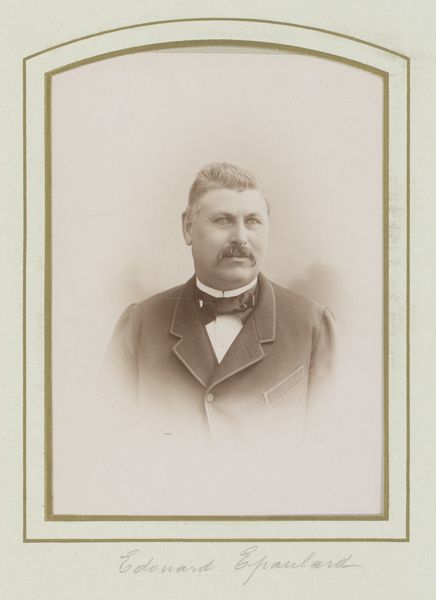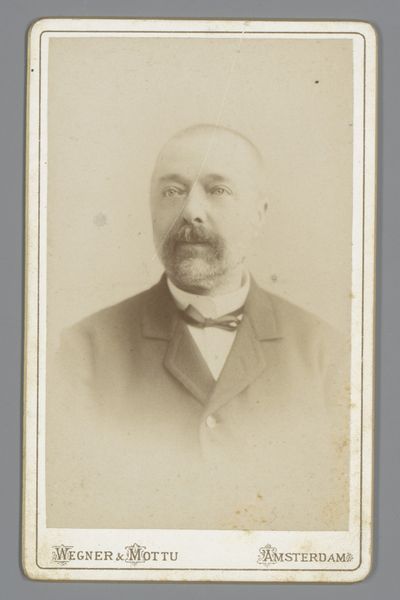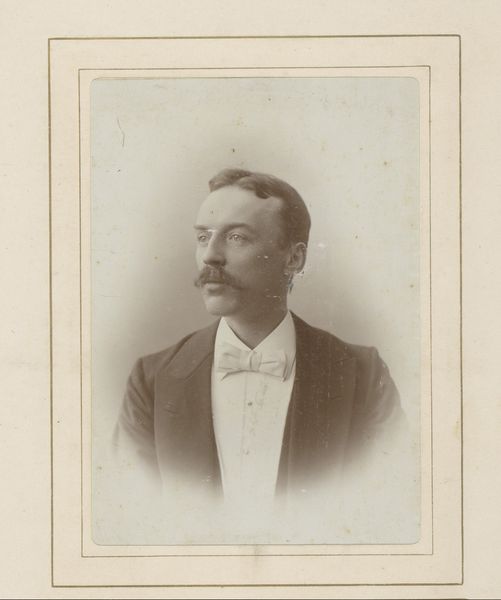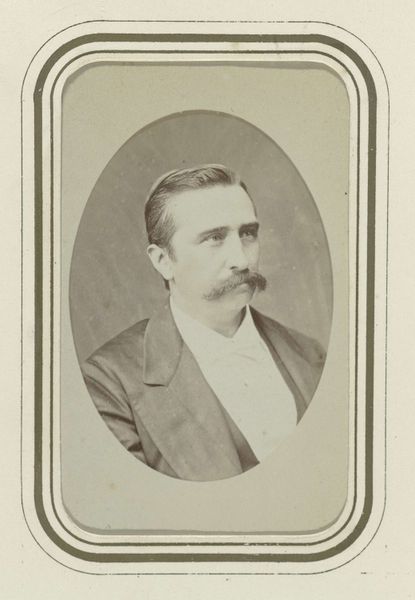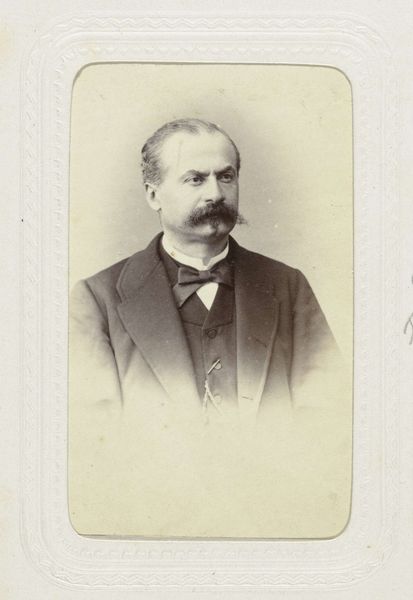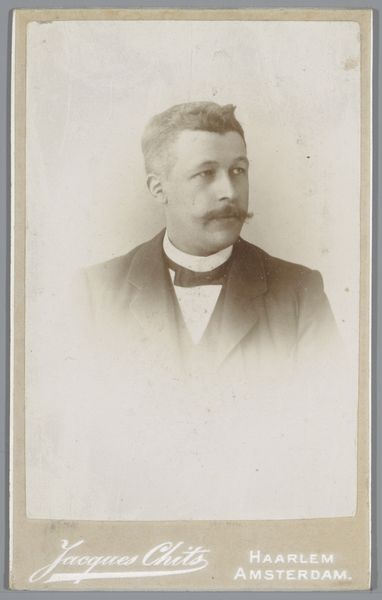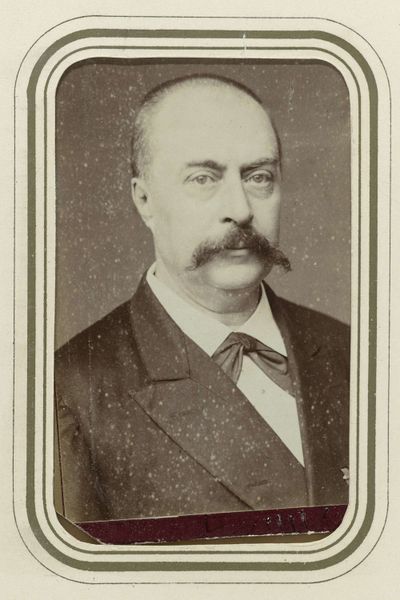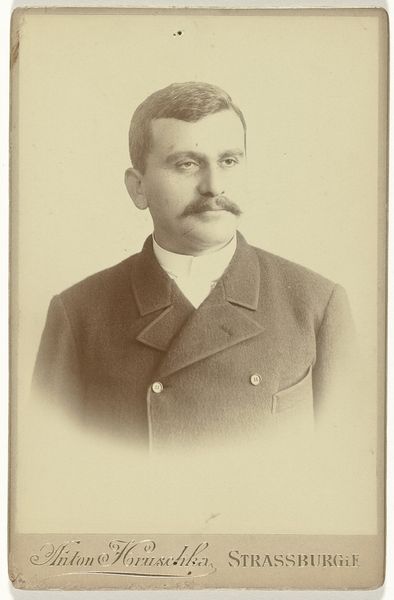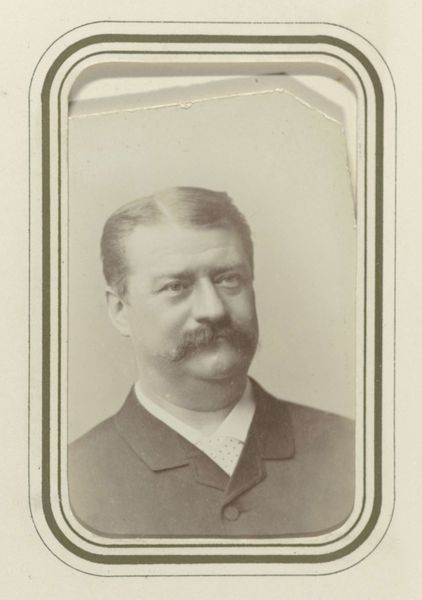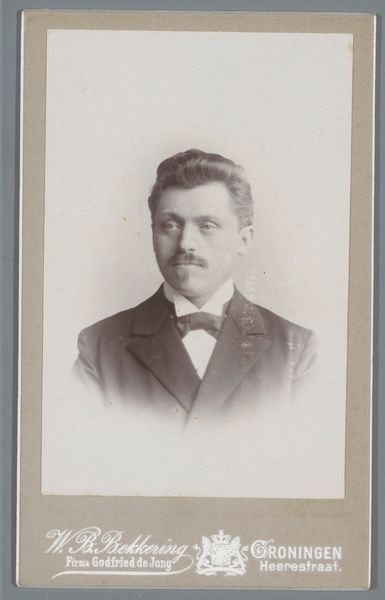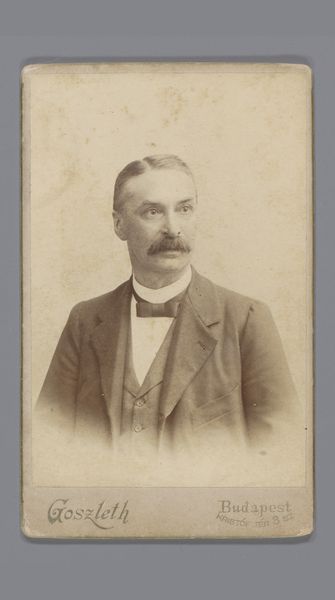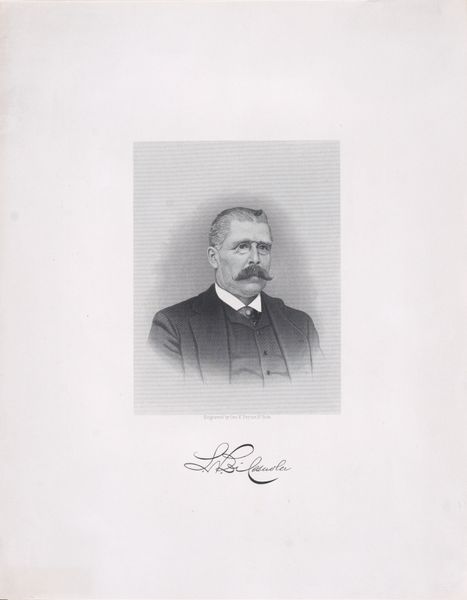
Dimensions: height 168 mm, width 106 mm
Copyright: Rijks Museum: Open Domain
Curator: Jean-Marie Pipaud captured "Portret van Alexandre Maréchal" in 1894 using photography. It's fascinating how this medium evolved as a way to democratize portraiture during a period defined by rigid class structures. What are your initial thoughts? Editor: It exudes an almost dreamlike softness, doesn't it? The subdued tonality, the way light gently models his face… There’s a real delicacy despite the subject's formal attire. Curator: The subject's pose and dress indeed speak volumes. Notice the crisp lines of his double-breasted jacket, the impeccable tie, and the medal he wears, markers of his social standing and perhaps his profession. During this era, such portraits served as powerful tools for self-representation and societal affirmation. Alexandre Maréchal is carefully constructing his identity for posterity. Editor: The semiotic weight of the garments and medals aside, I'm also struck by the subtle gradients and almost painterly manipulation of light. Look how the edges soften, blurring into the background; it almost negates the very detail that photography promised to capture. Curator: And that blending softens any rigid impression of social power. It subtly humanizes Maréchal, making him less of an emblem of authority and more of a man of his time. Considering photography’s evolving role in shaping public perceptions, there is that inherent tension between truth and idealized representation. Editor: Absolutely. It seems that even within a medium deemed "objective," there are conscious artistic choices influencing our perception. Perhaps a commentary on the illusion of permanence or an embrace of ephemeral qualities found in painting, even as photography established its own identity. Curator: These photographic portraits from the late 19th century invite us to reflect on shifting power dynamics and the rise of the bourgeoisie as a social and economic force. Maréchal, in this carefully staged setting, becomes part of a narrative about ambition, status, and the carefully constructed image of the self. Editor: A compelling insight into the relationship between technology and social expression, revealing that what constitutes truth and reality in art may, in fact, lie within its deliberate manipulation.
Comments
No comments
Be the first to comment and join the conversation on the ultimate creative platform.
